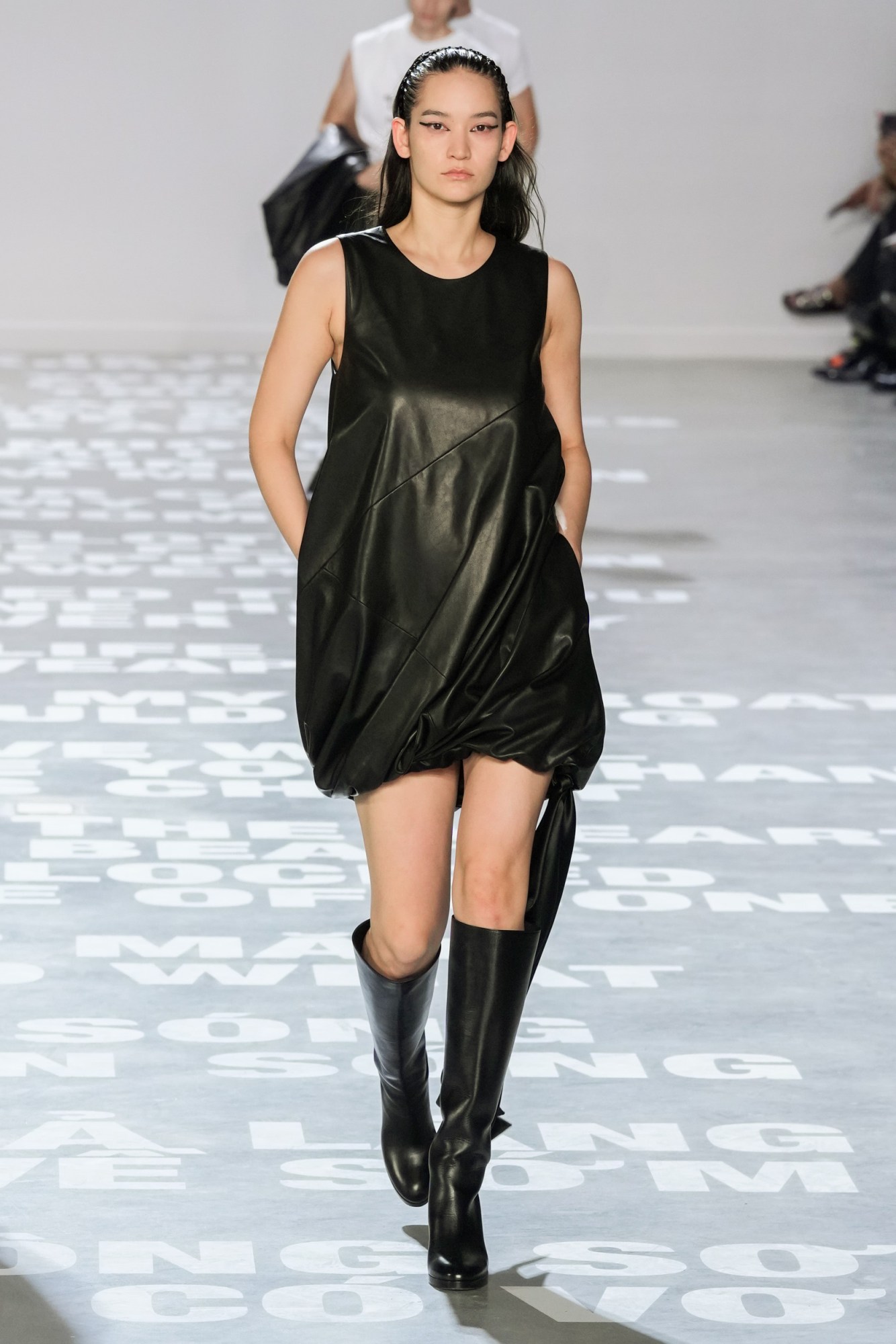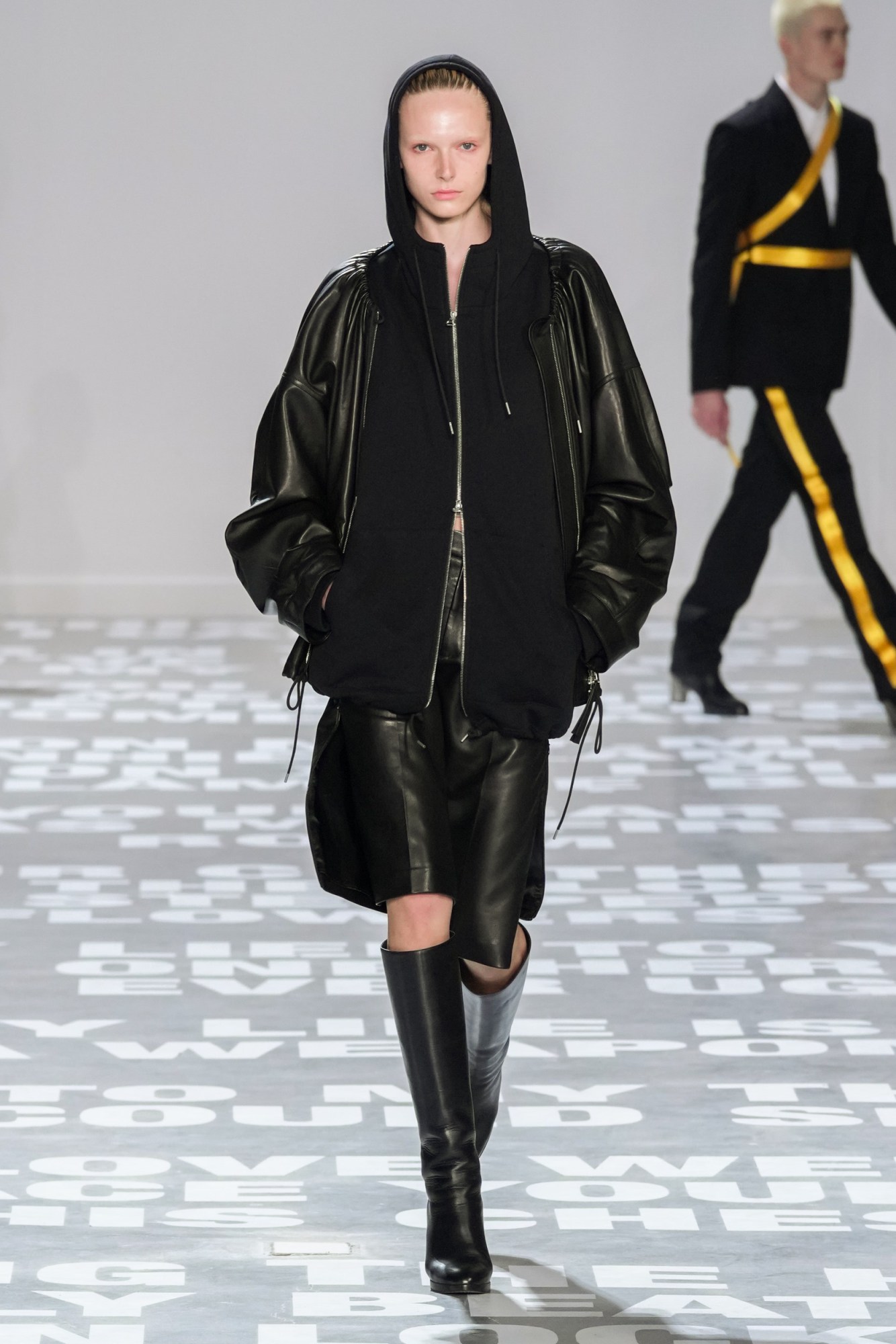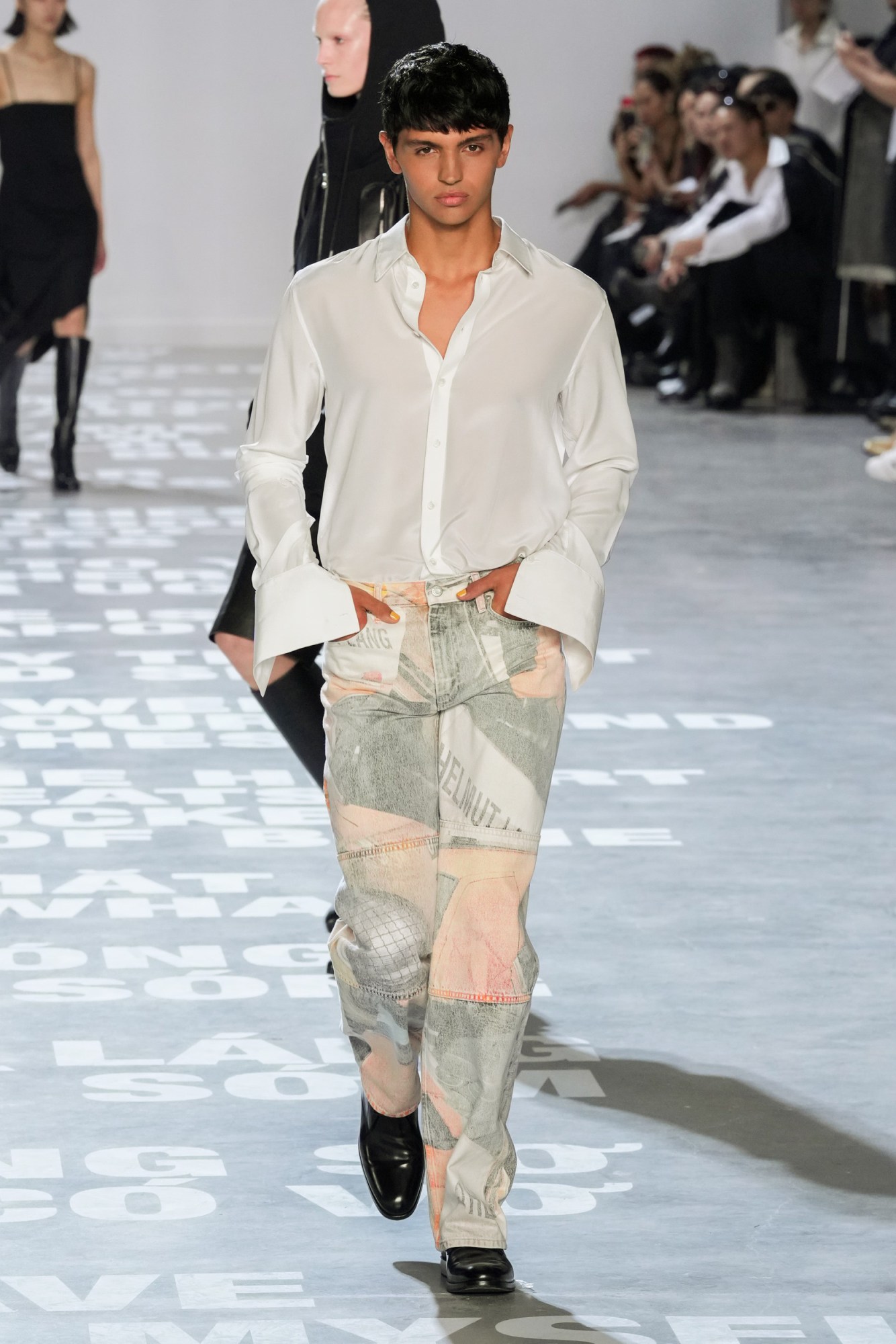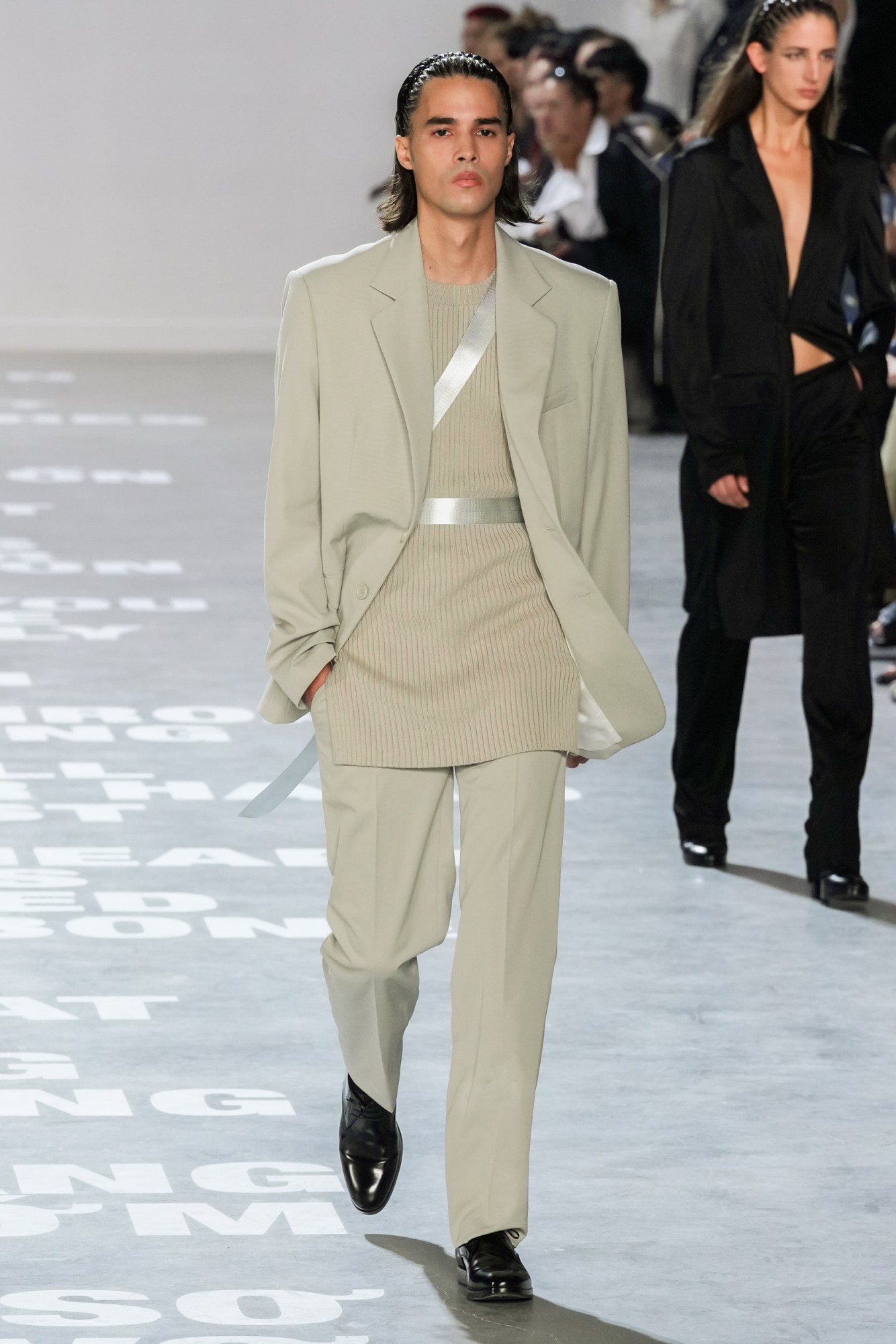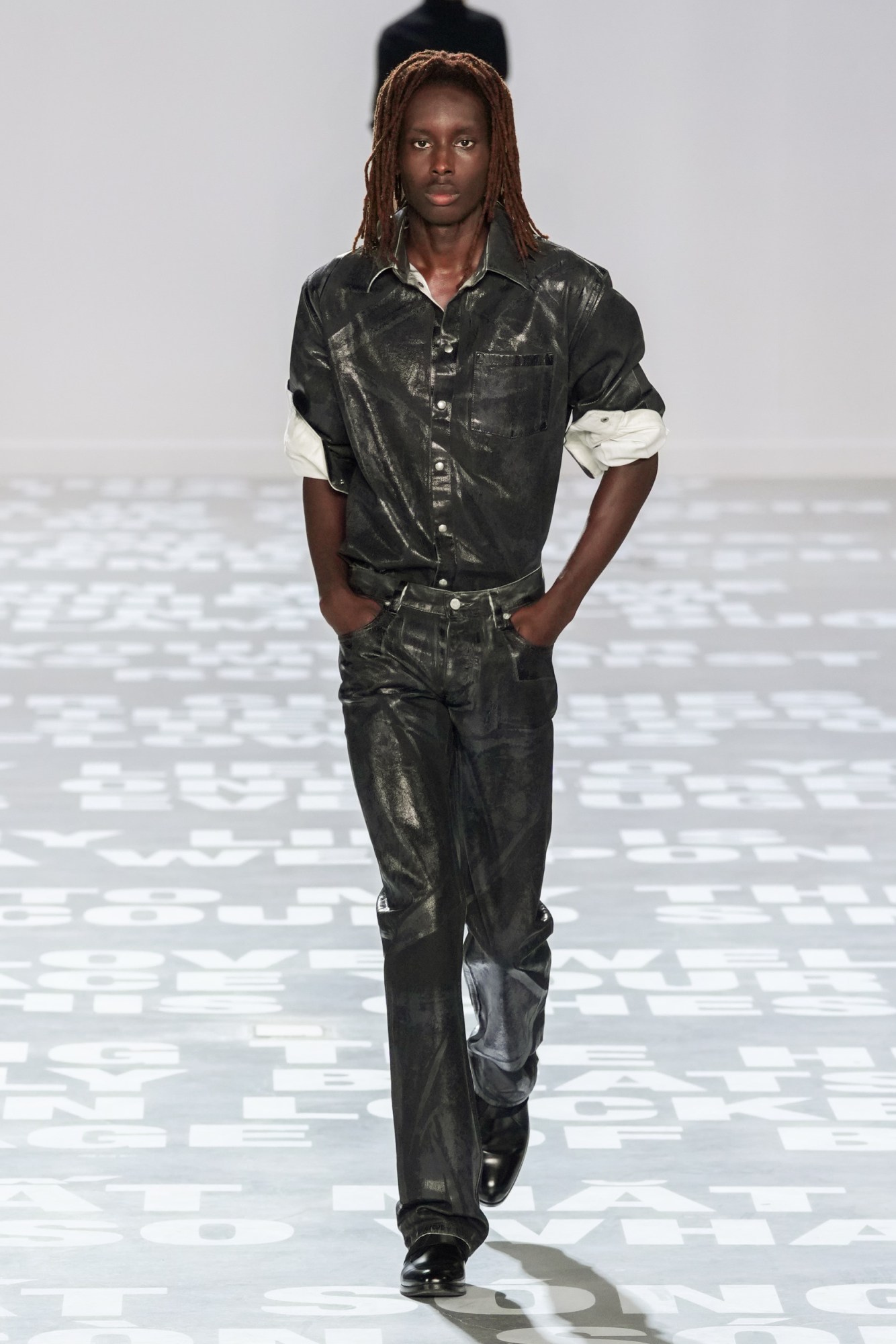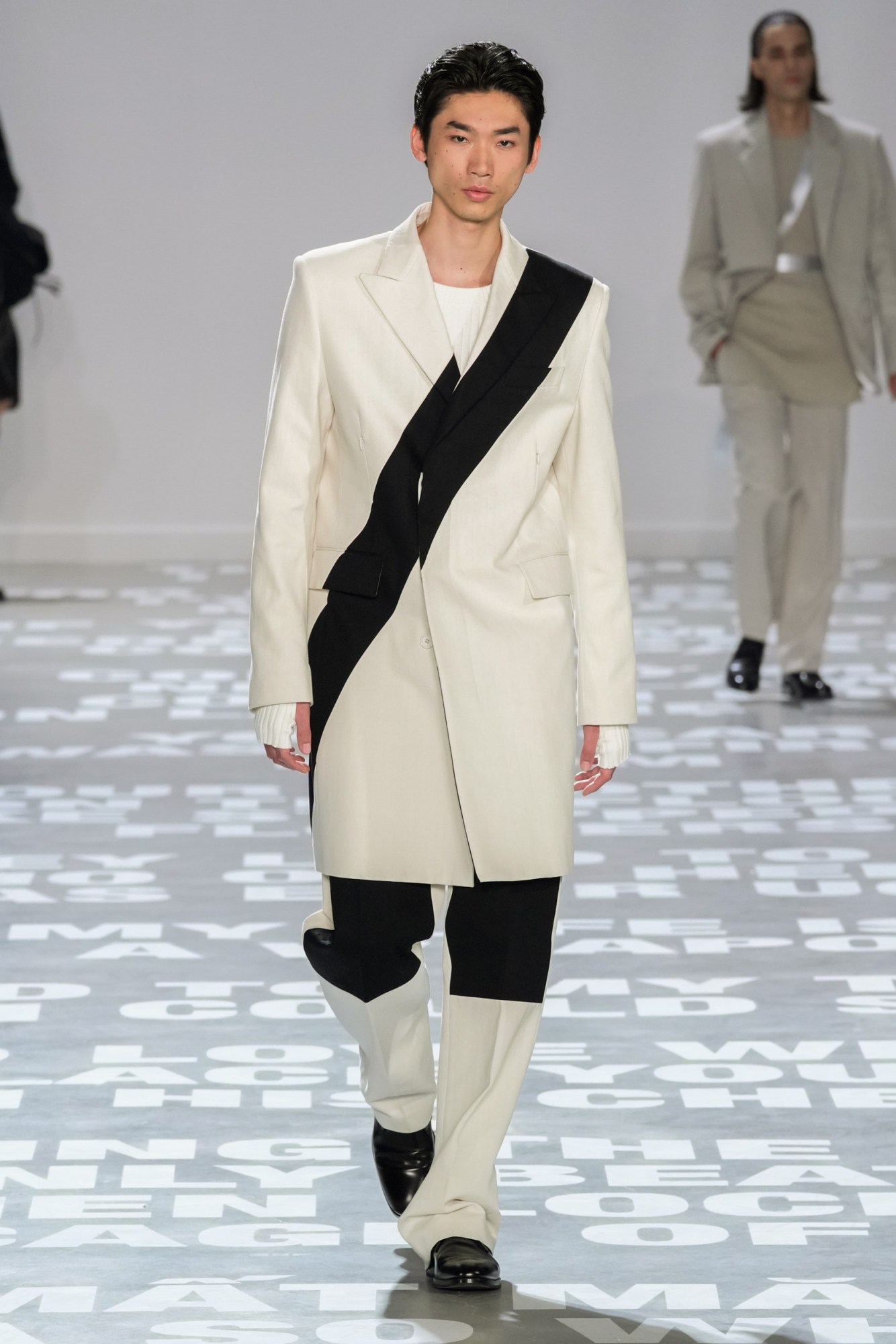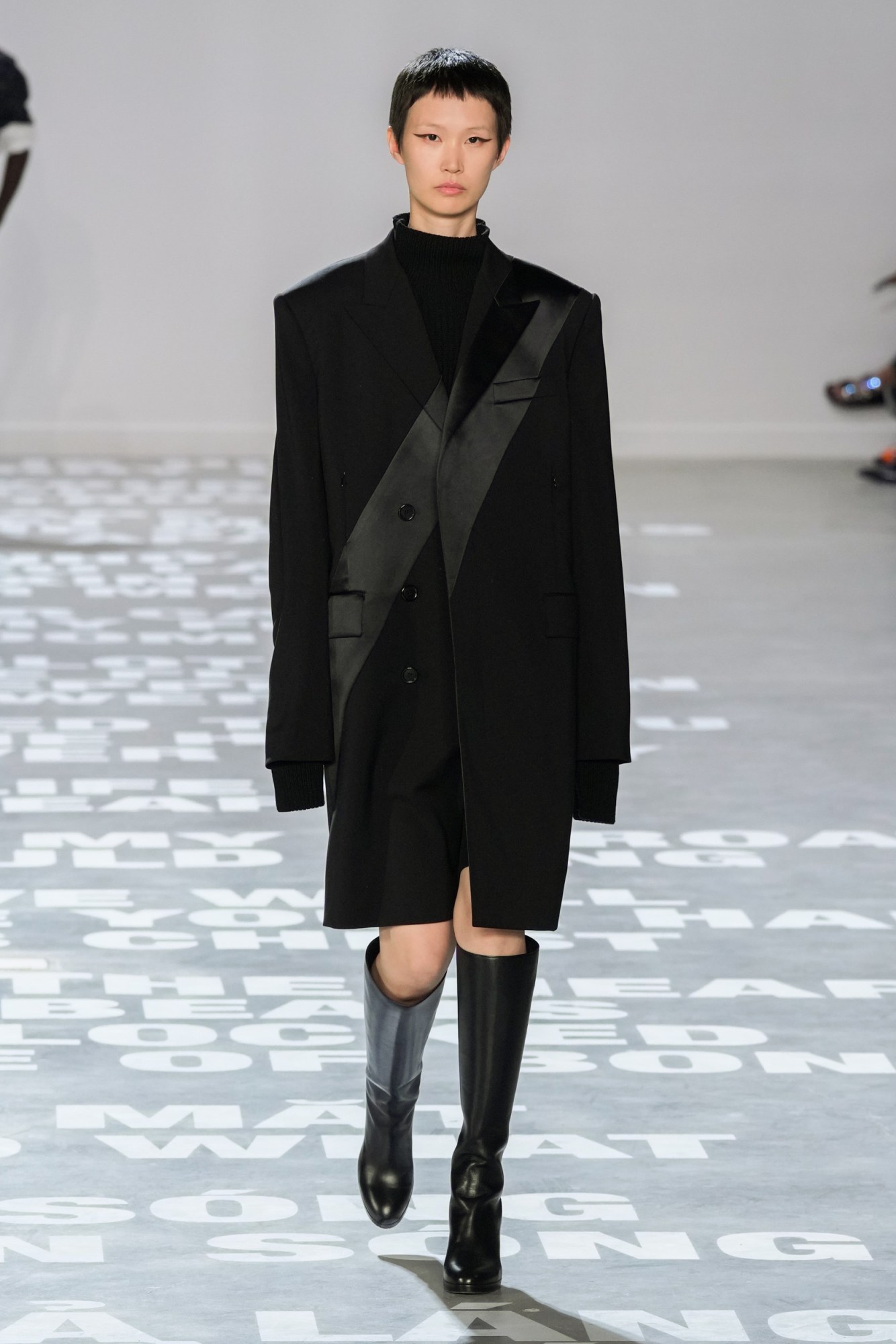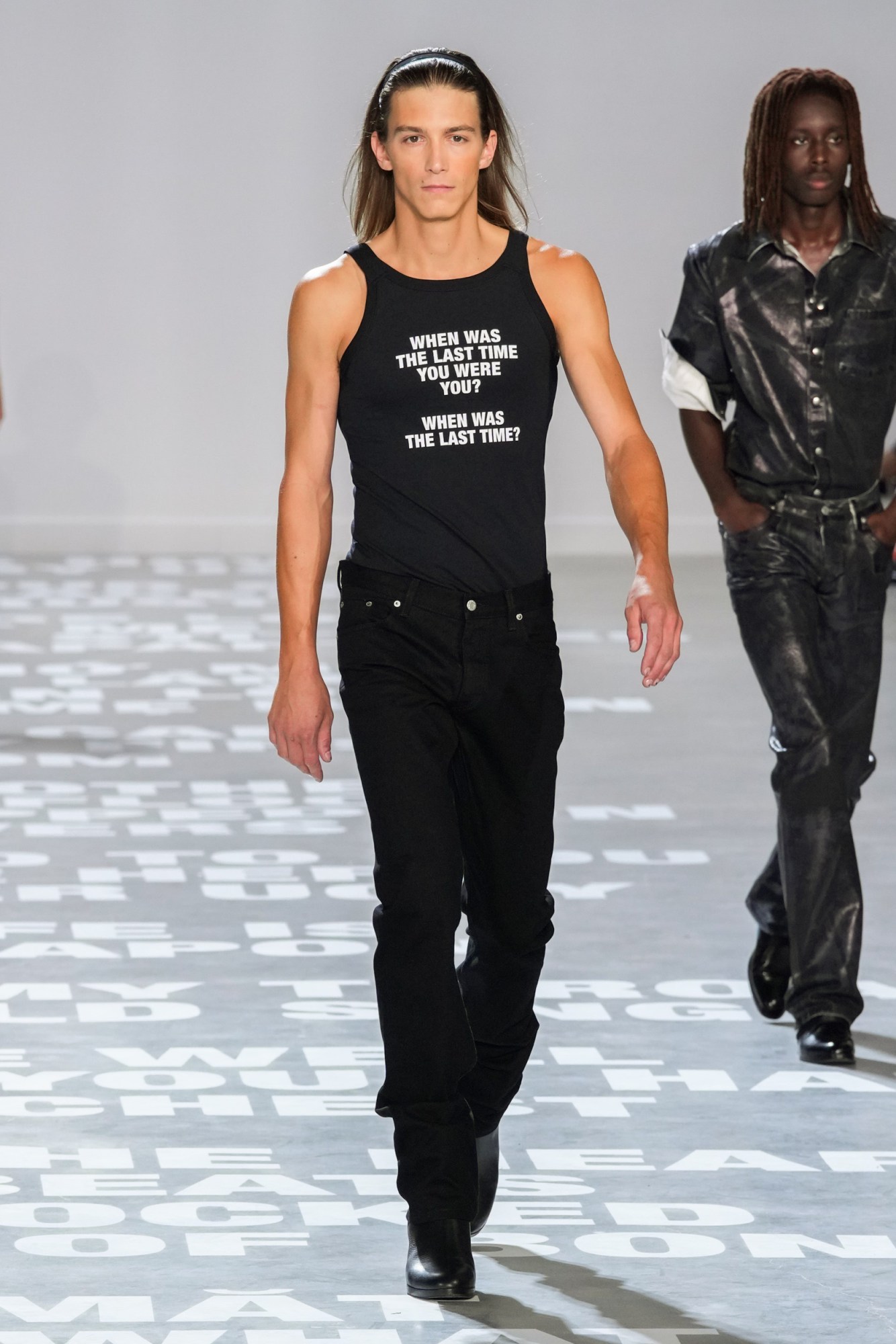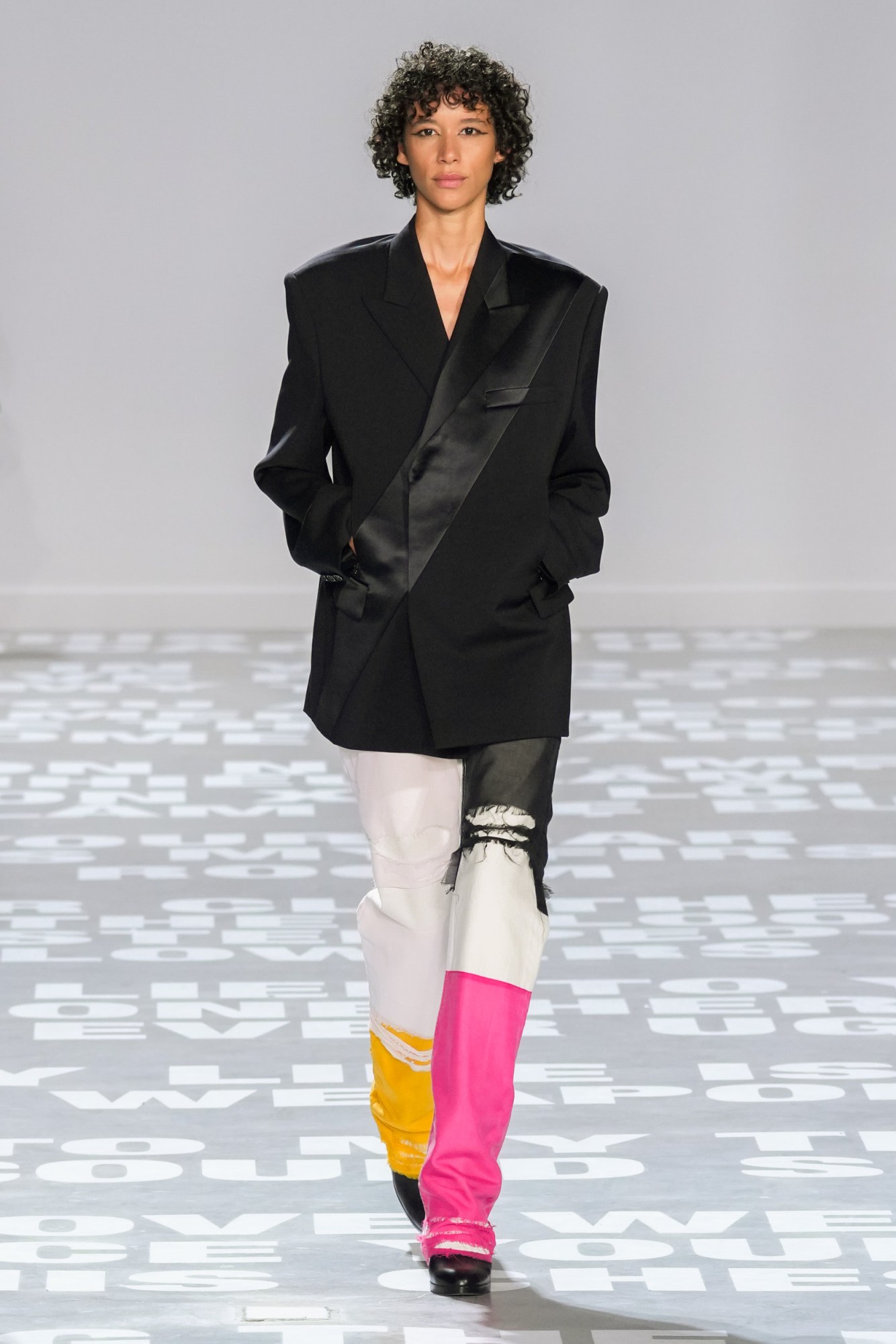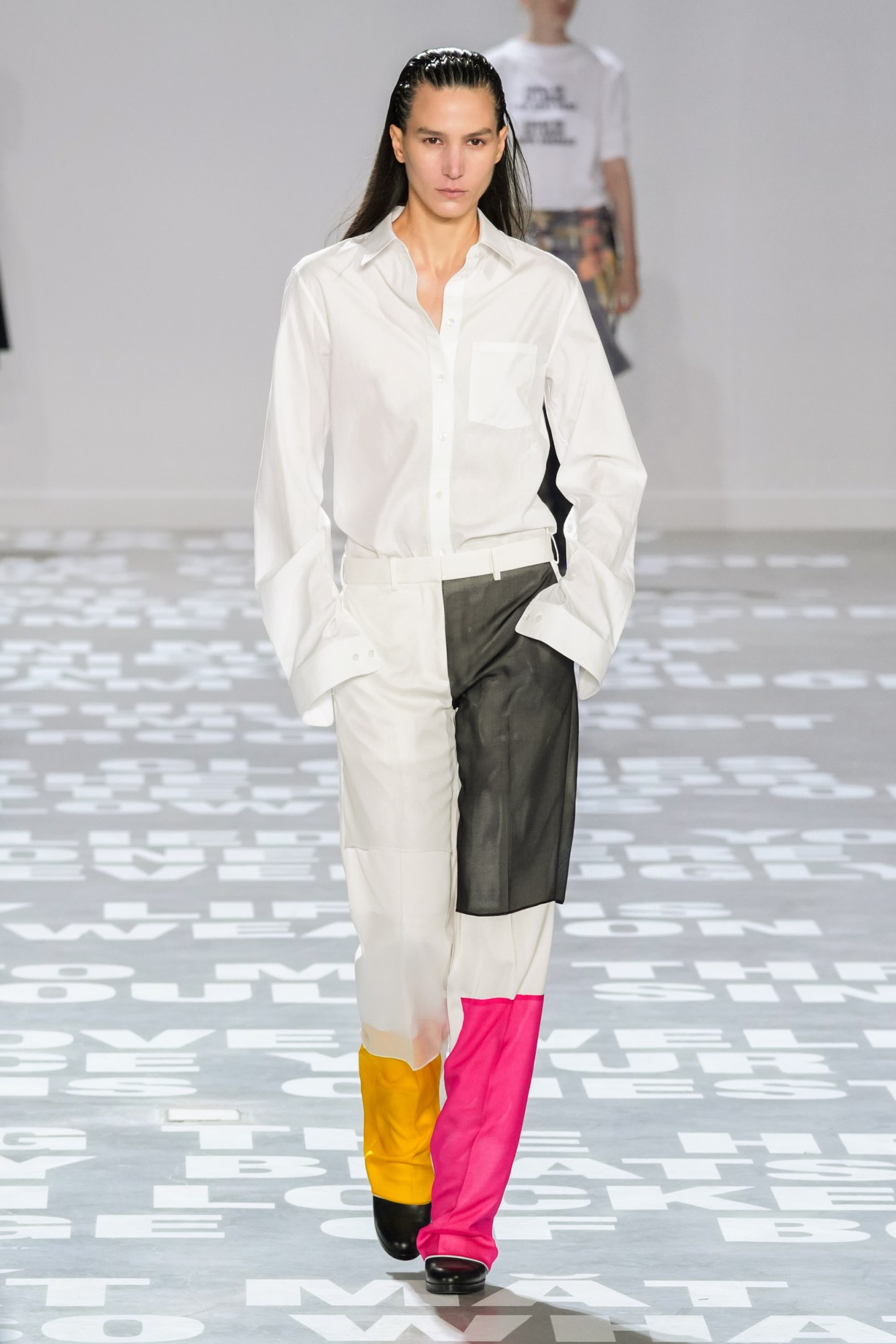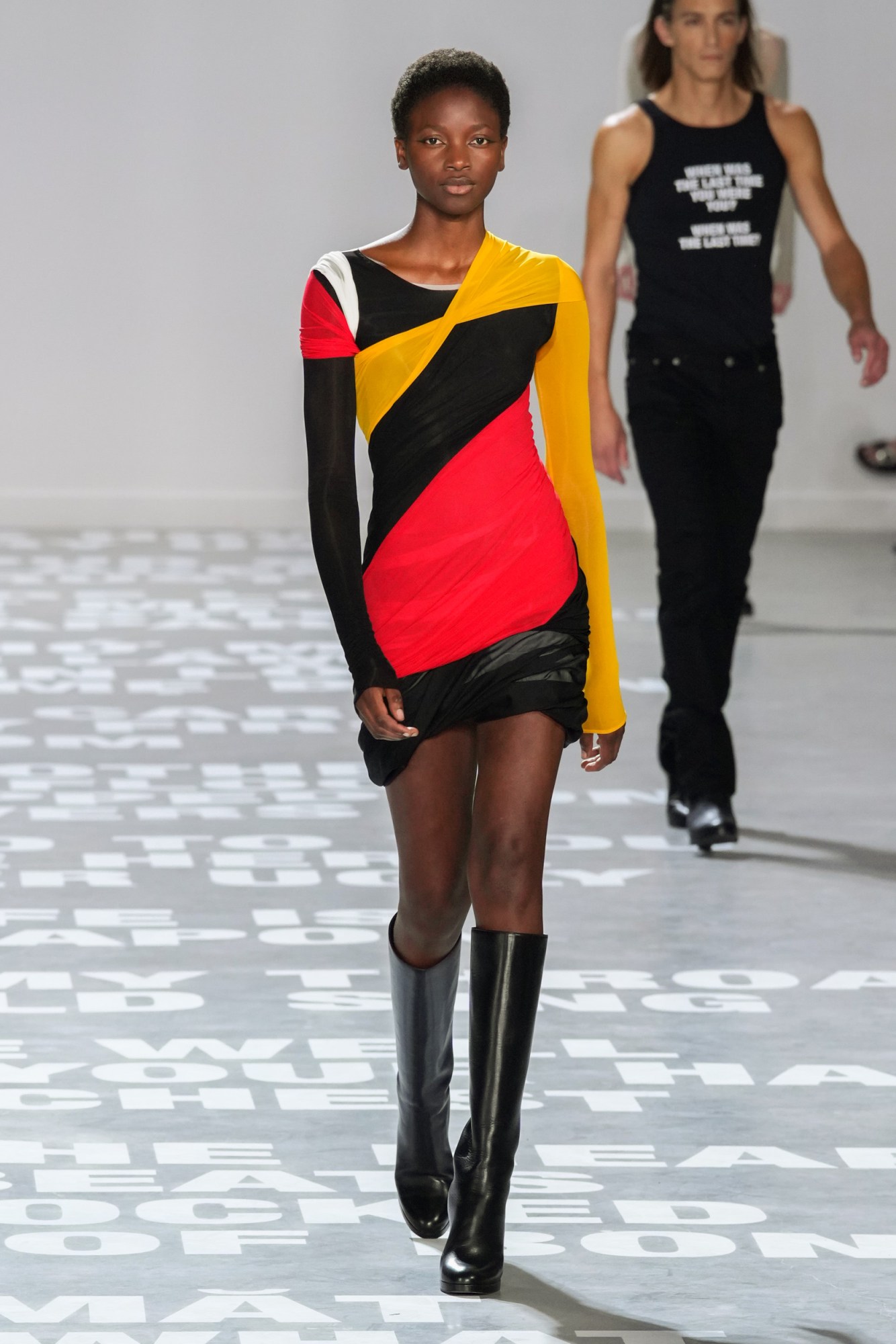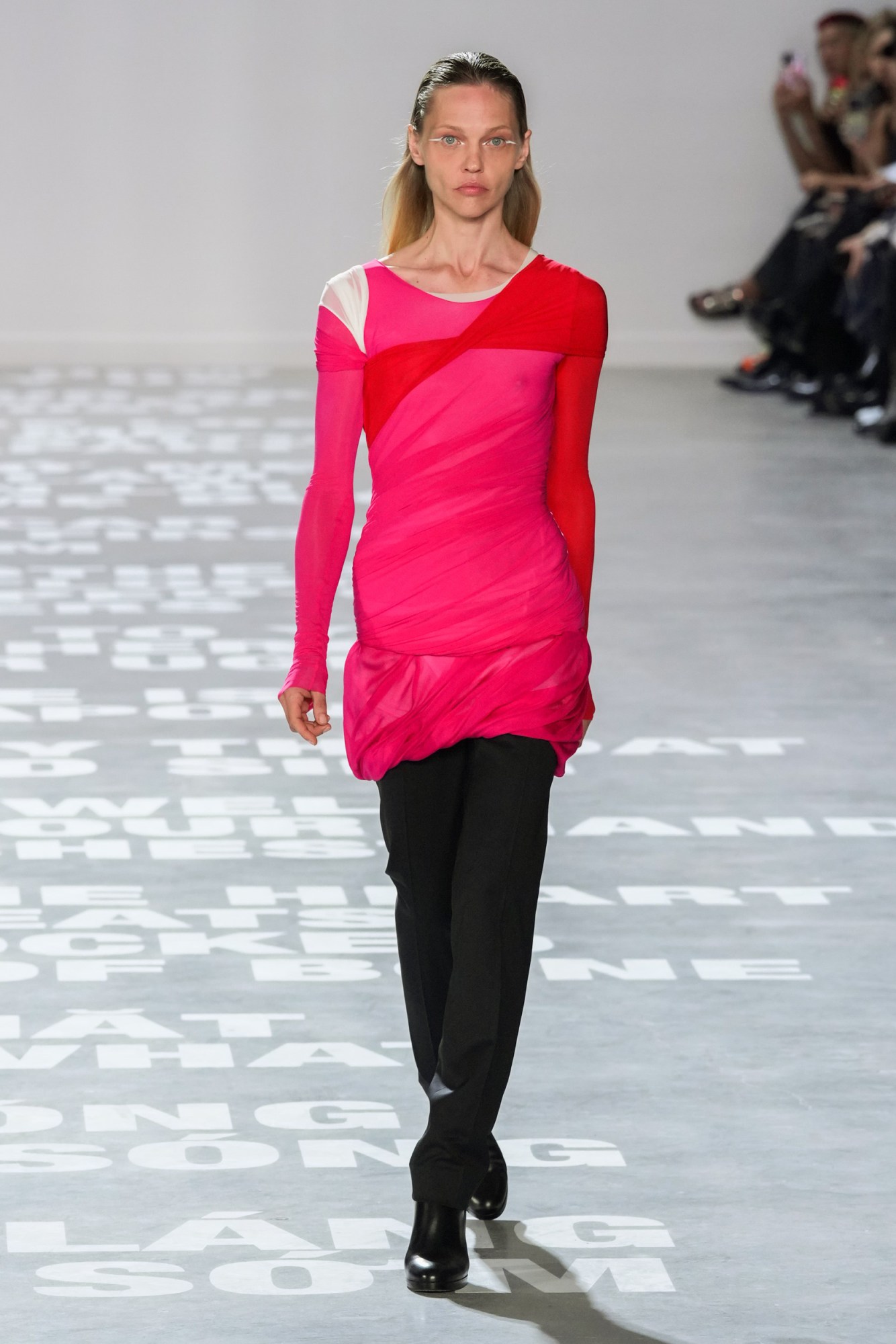Helmut Lang’s New York studio — the brand’s, rather than the man’s — looks much like you’d expect. A bright, white sprawling space on the fourth-floor of a renovated loft in the Meatpacking District, when we visit, it’s thronged by a a dozen or so austerely chic studio hands clad in sweeping black atelier coats with the brand’s all-caps, sans serif logo printed across the back. Among them — flitting between scrutinising prospective models’ walks, tweaking drapes here and there, and carefully pairing headshots with styled looks — is their new boss, Peter Do.
Since the announcement of his appointment to the helm of the brand — easily one of New York’s most emblematic from a capital-F fashion perspective — his debut show, which bowed earlier, has easily been the most hotly anticipated of New York Fashion Week SS24. Despite the pressures that come with taking up the helm of such a ubiquitously revered brand — albeit one that has had a rather rocky past decade or so, better known for its string of short-lived creative directorships than for the agenda setting fashion it first earned its name for— Peter, and his team, appear serenely focussed on the task at hand, with the anxieties you’d expect from someone days away from presenting one of the week’s most eagerly-watched shows coolly kept at bay.
While there’s certainly cause for nerves, though, there also plenty cause for confidence. After all, while Helmut Lang is a name widely cited as one of the most important in New York’s fashion history, Peter Do is one of the most important in its present day. Having made a name for his discreet yet directional aesthetic, he’s played a key role in creating a new template for American luxury fashion, just as Helmut did during his heyday.
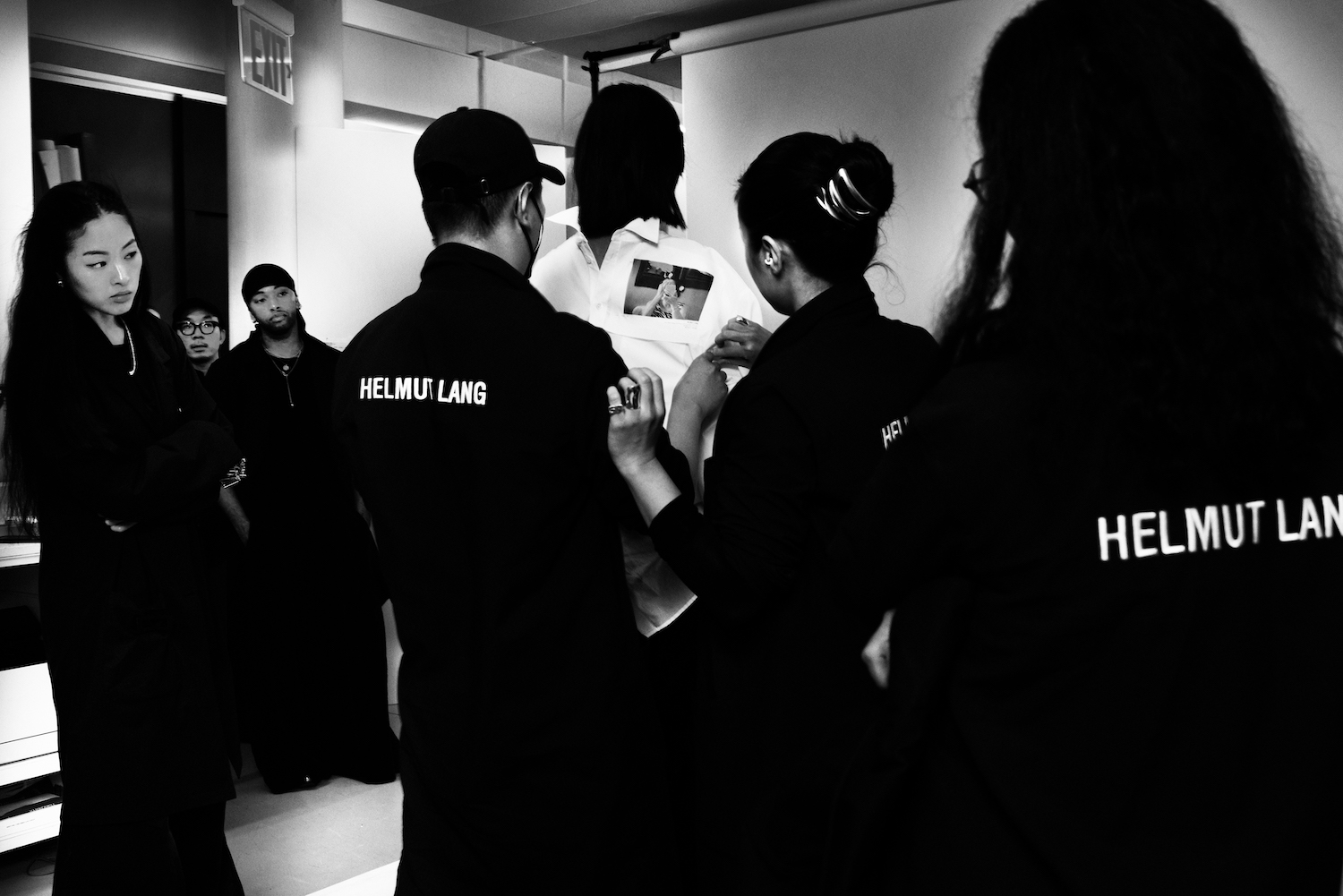
Having decided to make the hop to Paris with his namesake label, Peter saw the opportunity to double down on his contemplation of what, exactly, makes a luxury proposal uniquely American, drawing upon his early memories of a sense of luxury — particularly the experience of driving around in his parents cars following his arrival to the States from Vietnam at the age of 14. “Coming from rural Vietnam, where you either bike or walk everywhere, being in a car felt like the most luxurious thing ever,” he shares, expanding on the senses of freedom and protection that directly informed the sharp-shouldered wool jackets fitted with adjustable highlighter-hue seatbelt sashes.
The exploration of cars as spaces of protection took on an even more personal timbre on reading — and, at the show, hearing — the collection’s accompanying shownotes, penned by Vietnamese-American writer Ocean Vuong. “We spoke a lot about cars as safe spaces for queer people,” Peter says, “spaces where you can be yourself, listen to music… be intimate with people without your parents finding out,” a notion that translated to translated to tight white tanks, tees and reverse-constructed shirts printed with excerpts of the Ocean’s poignant poetry in both English and Vietnamese.
More than a meditation on Peter’s relationship to automobile culture, though, it was also a love letter of sorts to New York and its muddle of inhabitants. Between a soundtrack peppered with subway announcements and blares of jazz and finale that resembled the a rush hour mêlée at Union Square subway station, the overall impression that this “new American uniform”, as Peter calls it, left was of an intentionally eclectic wardrobe designed to intuitively attire the people he sees in the streets of the city he now calls home.
Below, ahead of the show, Peter expands on the collection’s inspirations, his approach to keeping his two brand’s separate, and his aims to bring Helmut Lang to its biggest audience yet.
So, this show is probably the most anticipated show of New York Fashion Week, which obviously entails a fair bit of pressure… How are you feeling?
To be honest, I’m really nervous! Helmut is one of my ultimate brands, and this is my dream job. So yes, there’s a lot of pressure, and a lot of expectation, and I’ve been feeling that more and more everyday.
I guess that must be compounded by the fact that Helmut’s design legacy is one that’s been riffed on so extensively, particularly in recent years. What did you want your take on the brand to be?
Well, I feel like Helmut walked so a lot of people could run, including me — so for me, this really feels like an important homecoming moment. We only lightly touched the archive, though. We referenced things like the first pair of Helmut Lang jeans that I bought 15 years ago, for example, but the main thing I wanted to bring to Helmut was this idea of a system of dressing — we’ve spent the past three months thinking about what makes a classic woman’s blazer, men’s blazer, pair of pants, a shirt… I really want to build a strong foundation, and build from there. For me that taps into a sensibility that’s very Helmut – there was always a sense of consistency to what he did. Pieces always returned, but reinterpreted, perfected or even destroyed. There was always a base that he started from — it was never from scratch, and I love that. It’s an evolutionary design process, which reflects how we live.
When did you first discover his work, and what impact did it leave on you?
Tumblr! That was really my fashion education — it’s where I learned about Alexander McQueen, Geoffrey Beene, Yohji Yamamoto, Phoebe Philo… With Helmut, though, I don’t think I fully understood its impact at first – I just remember seeing pictures of Kate Moss and Kirsten Owen in old Helmut Lang shows, and it just felt so modern. I feel like I’ve come to understand it more over time — as I’ve gotten older, I’ve found my voice, and come to think of myself as a real apparel designer. I’m drawn to solutions-driven clothing, and providing a system that people can really use, Because of that, I want the new Helmut to speak to more than just fashion people, and also to be available at a more accessible price point.
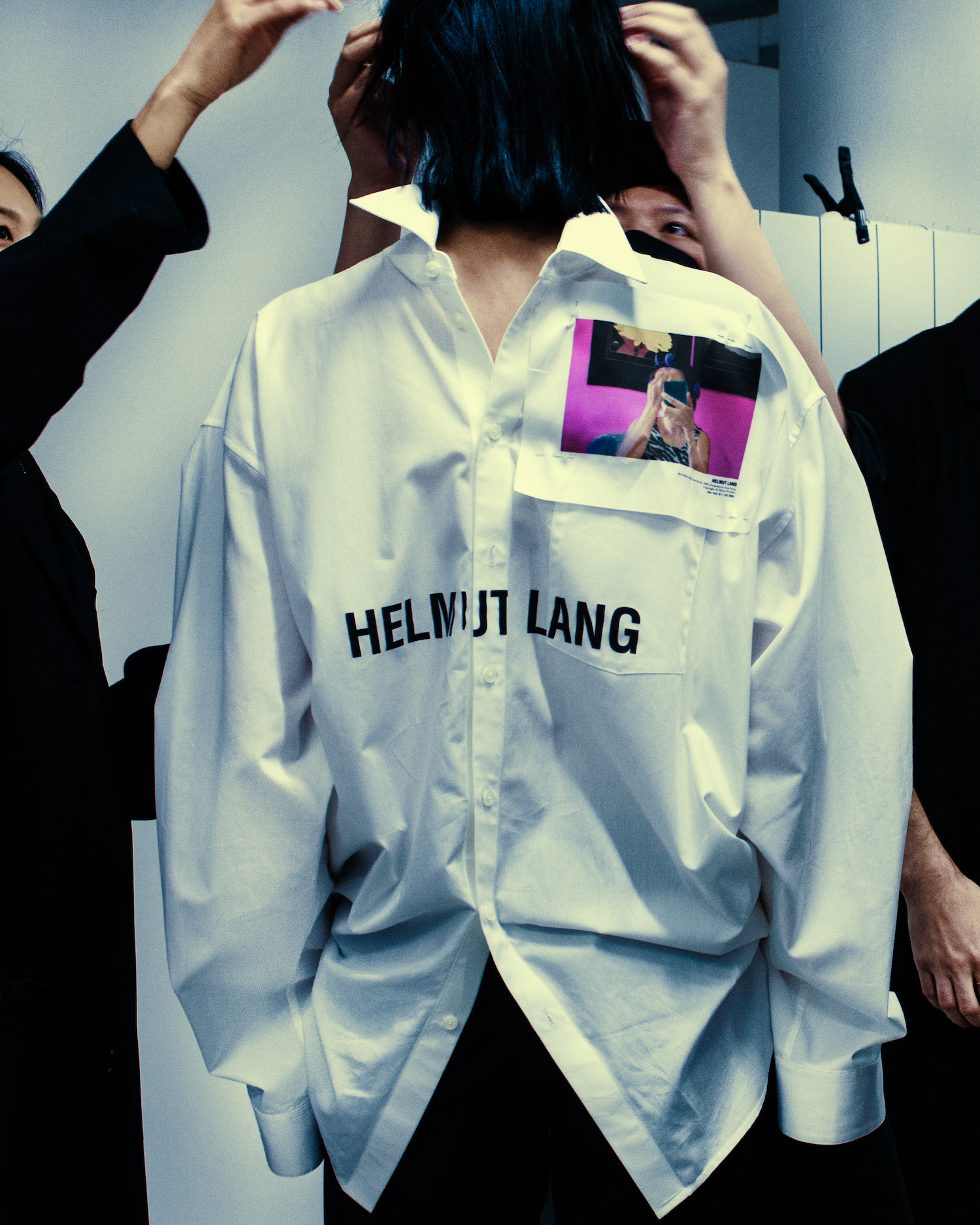
That said, with your own brand, you’ve always approached quite a systematic approach to design, creating complete, interchangeable wardrobes for your customer. How have you found the experience of working across Helmut Lang and Peter Do?
To be honest, I’ve been sprinting for the past few months, and I haven’t really had the time to think about it much. But I think people will see the common ground between the two. I really want to create clothes as tools for people. I want to be helpful, and provide things that you feel safe and free in. The freedom to choose exactly what you want to wear — whether that’s a skirt or a dress or a blazer — is really important to me. Regardless of the gender of the model you might see a piece on, I hope people will go to a Helmut Lang store and be able to shop the clothes in a way that represents them. At the end of the day, I’m just here to make clothes.
How does it feel designing for a brand that doesn’t have your name on the door?
I wonder how Helmut feels! That’s what I’ve been thinking a lot, perhaps more than I should: How would I feel if, thirty years from now, someone was designing for Peter Do? Now, I’m continuing conversations rooted in someone else’s legacy. I mean, I don’t know what he thinks, as I’ve never met or spoken with him, but I know how much respect I have for the brand and how much I want to do it justice.
As your understanding of Helmut Lang has developed over time, what have you come to see as the fundamental values of the brand?
I mean, this is the brand that moved the dates of the New York Fashion Week calendar when it decided to move here from Paris — that took balls! And that’s something I really look up to, even with my own brand. Helmut always did things that felt right, and pioneered a radical way of thinking, and that’s what I want to do now. To me, the brand feels very New York, and I want to dress the city, to create a uniform for it. Milan and Paris are great, but I want to tell the story of the people who live here, and their specific, dynamic, diverse — and chaotic! — way of living. That really inspires me.
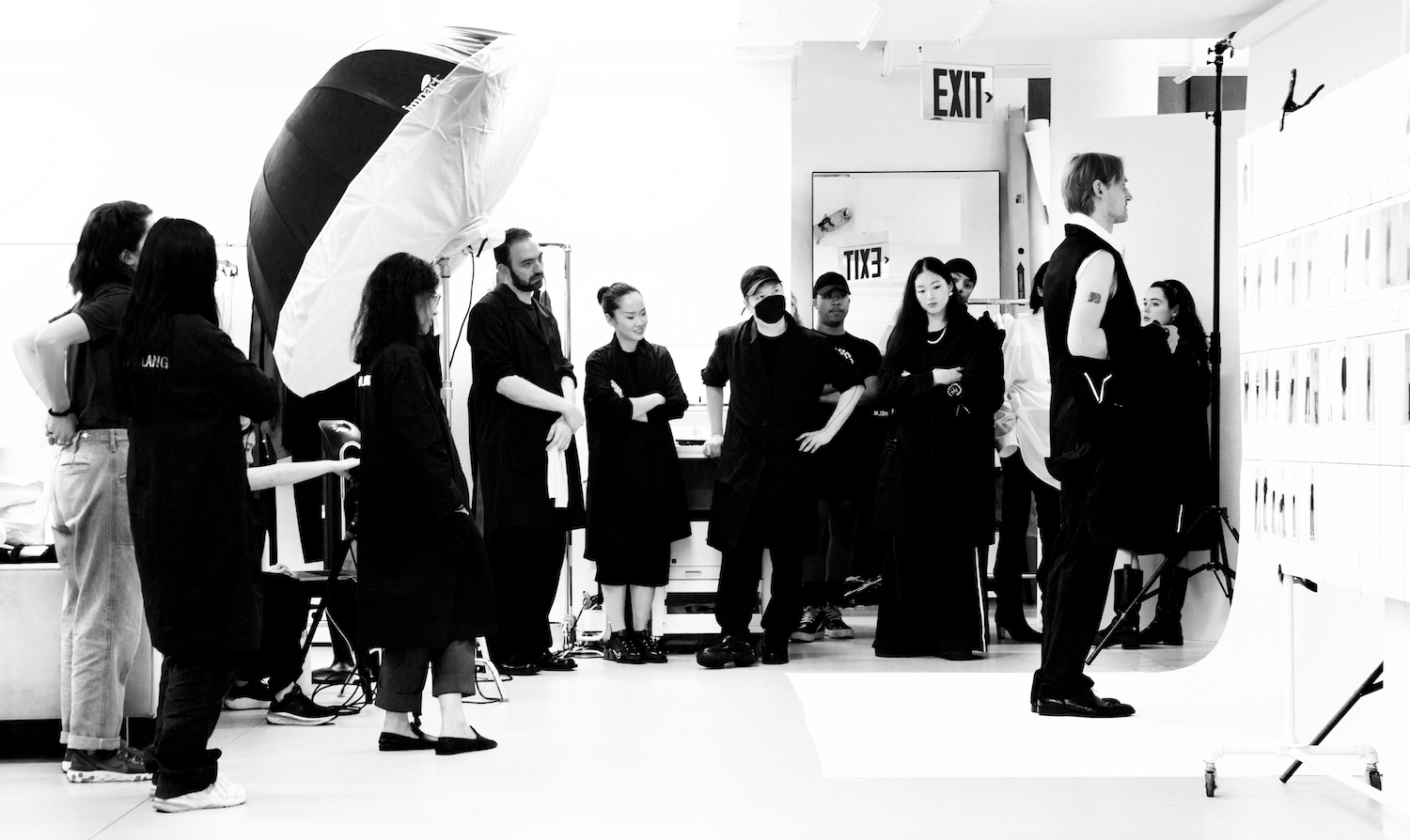
It’s been interesting watching the Helmut Lang brand’s trajectory over the past decade — there have been quite a few different interpretations of the brand’s heritage. What were your initial instincts about how to approach the job at hand?
I want to dress the people of today, so I thought a lot about what that looks like through a Helmut lens. Back in the 90s, when he sent a CD-ROM out to editors in place of a show, he was a trailblazer for that. I don’t know if I want to be a brand that’s known for concertedly pushing boundaries, but I also want to reiterate what the brand represents in a way that’s relevant now. There are a lot of Helmut Lang copies in the world today, but I want people to come home to the original thing.
And what’s at the heart of that?
It’s not just a case of rehashing what Helmut did, because there are things that were personal to Helmut that aren’t personal to me. But ultimately, I want people to think of Helmut as a destination for when you just need clothes. Obviously, we’ll develop that conversation season on season, but if we can dress New York again, that would make our mission a success.
A touchy question, perhaps, but over the past two or so years, there have been numerous instances of buzzy, well-respected independent designers taking on second jobs where they’re tasked with reviving a heritage brand — and that has then gone sour quite quickly. Was that something that figured in your mind when you were approached for this job?
Definitely — a lot went through my mind when I was first approached. Can I handle two brands? Will they be different enough? Am I the right person for the job? Since starting, though, I haven’t really had a moment to reflect on that — I’ve really been sprinting, and trying to get everyone together to put on this show. But there’s so much demanded of creative directors today — you have to be personable, you have to be a public figure, good at marketing, good at sales, make hero products while also having a story and being fashion forward… It’s a lot! There are obviously people out there who do it really well, but it’s a taxing job, and it’s given me a lot more compassion for people in similar positions. I don’t know how they do it!
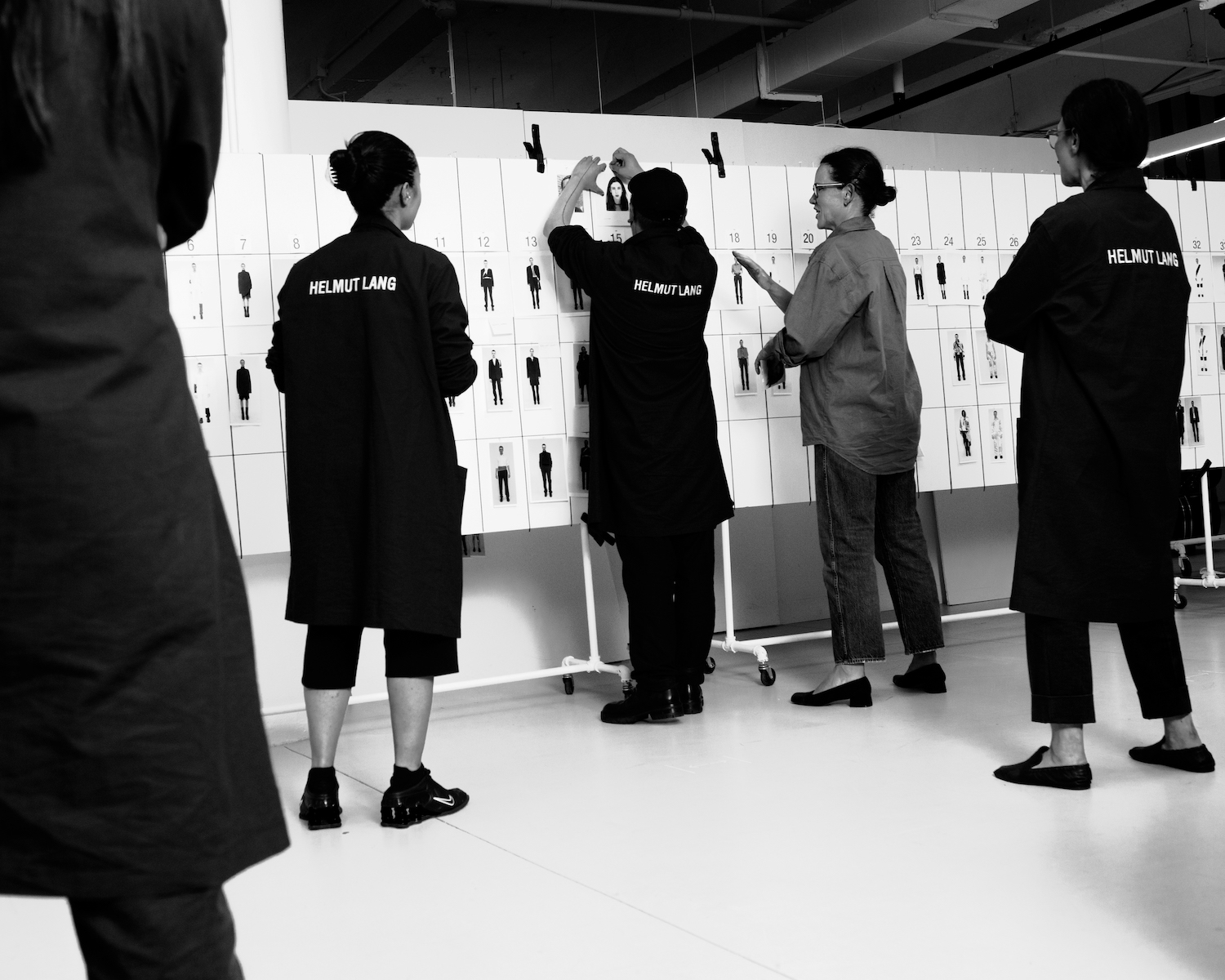
Well, you are! But let’s talk about the collection. What was the jumping off point?
Well, I was thinking about luxury, and my experience of it as a Vietnamese-American designer. My first experience of luxury was when I first moved to America, and both my mom and dad had cars. Coming from rural Vietnam, where you either bike or walk everywhere, being in a car felt like the most luxurious thing ever, and there was such a sense of freedom to it. That’s something that’s taken for granted, but I really wanted my Helmut to conjure a similar feeling in people. I want it to be a safe space, something you can rely on, but that everyone can access and afford. That was really the starting point — the idea of cars and the journeys associated with them, and then bringing that to New York, where people don’t really drive. I wanted these clothes to offer a layer of protection, to act as vehicles that allow people to really feel free and that transport them to places.
Across the collection, we’ve taken these vintage seatbelts and turned them into trims that you can configure in multiple ways. We also wanted it to feel like the streets of New York, so the taxi yellow comes out, and we’ve done prints by distorting images of the original Helmut Lang taxi adverts. We also collaborated with Ocean Vuong, who’s written really beautiful poems that feature as prints. We spoke a lot about cars being safe spaces for queer people — spaces where you can be yourself, listen to music… be intimate with people without your parents finding out. One of the poems he wrote reads: “Your car was my first room / our clothes on the floor / like stepped on flowers.” There’s also a Vietnamese poem about the loss of his mum to cancer — my father passed around the same time in my life, so we both went through a similar journey. Now that we’ve become good friends, collaborating on this just felt right.
You’ve always adopted quite an autobiographical approach to design with Peter Do. Do you feel that fed into this collection?
When your work is your life, your life inevitably comes out in your work, and it becomes really personal. Everything that I do, or what I’m thinking, usually manifests in the clothes in some way. My work is always really reflective of how I feel. And I think that’s why I feel so strongly about things like me not showing my face, because I give so much of myself and my personal life through my work — it’s almost like my face is the last thing I have that’s actually mine!
It’s funny, because there seems to be quite an anonymous quality to the collection — while it definitely feels distinct, it also feels like a wardrobe that you could wear to blend into an urban crowd?
Well, I’ve always loved the idea of blank spaces that still have soul to them. To me, it feels like a new American uniform. It feels familiar and like it’s always been there, but perhaps not in the configurations that you see here. The thing is, though, that a lot of what makes up that familiar uniform came from Helmut. For example, he was a real pioneer of raw denim in the 90s, but a slim raw denim jean now feels like something you can get anywhere. But for me, good design is design that feels like it’s always been there — that’s what I always find myself drawn to, and that’s what I want to do with Helmut.
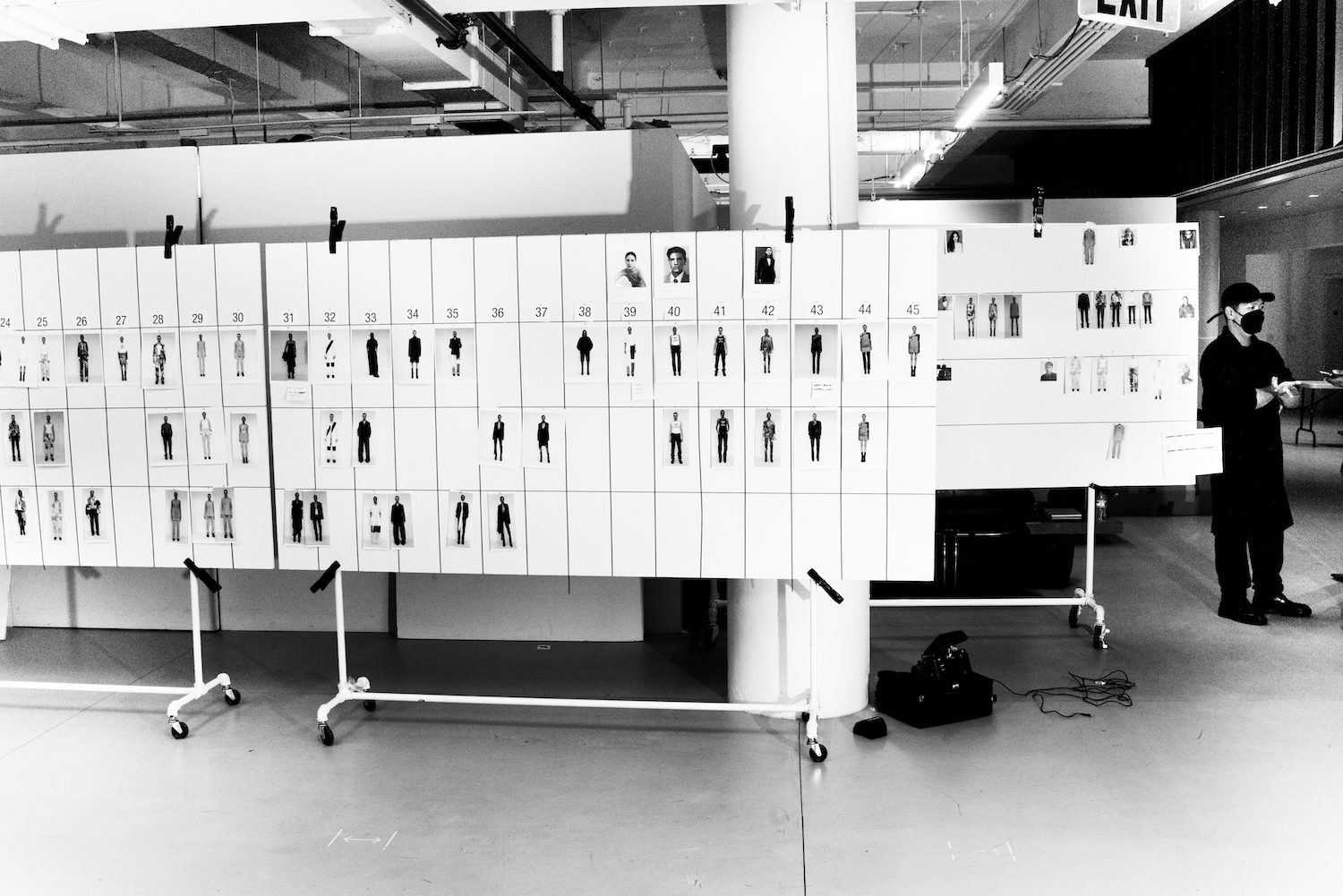
One thing that’s always been at the heart of the Peter Do narrative is the team — how you’re a group of friends who found each other on the internet, with that friendship then growing into a business relationship. And obviously, that entails its own difficulties. What has entering an established corporate structure with an entirely new team been like for you?
It’s actually what really allowed me to separate the two — and it’s nice that, at Helmut Lang, we’re not constantly working forever! It’s definitely been an adjustment, but there are similarities. From the beginning, it’s really been about bringing everyone together as a team, and people have been saying how there’s laughter in the studio again, and people feel creatively motivated and excited to come to work — and that’s what I always feel at Peter Do. Of course, there are huge differences — it’s a corporate structure and I have bosses. And I’ve spoken about the challenges of being a manager at my own brand, but now I have way more people under me. There’s a lot to learn, but I’m learning quick, I think!
Have the lessons you’ve learned from starting up Peter Do informed how you’re approaching your role at Helmut Lang?
I think it works both ways, I’ve definitely taken things I’ve learned here at Helmut to Peter Do, too. At Helmut, it’s about encouraging more creativity, pushing things further and taking risks, but at Peter Do, it’s about maybe implementing more structure — so ultimately, it ends up being beneficial for both brands.
Final question, what are you most excited for people to discover in this first offering?
I really just want people to be excited about wearing the clothes. If I see people wearing this on the streets by next February or March, and they really feel like they’ve found a new wardrobe, then this has been a success.

Credits
Photography Hector Clark
Creative Direction Alexander Roth

